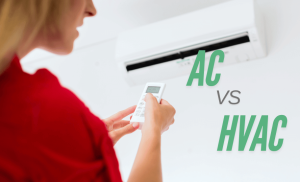In recent years, air source heat pumps (ASHPs) have become a popular choice for homeowners looking for energy-efficient heating and cooling solutions. They’re known for their ability to both heat and cool a space, making them an appealing option for regions with varying seasonal temperatures. But how do air source heat pumps actually work, and what makes them so efficient? Let’s break it down.
The Basics of Air Source Heat Pumps
Air source heat pumps use a bit of science and technology to keep your home comfortable year-round. Essentially, they move heat from one place to another. In the summer, they extract heat from inside your home and release it outside, cooling down your indoor spaces. During the winter, they pull heat from the outdoor air and bring it inside to warm your home.
It might sound strange to extract heat from cold outdoor air, but even in chilly temperatures, there’s still energy available in the air. ASHPs are designed to capture and move this heat to ensure your home remains cozy and warm, even in cooler weather.
How Heat Pump Technology Works
To understand the science behind air source heat pumps, it helps to think of them as a reversible air conditioning system. At the core of an ASHP is a refrigeration cycle, similar to what’s inside your fridge. Here’s a simplified breakdown:
- Evaporation: The process starts with a liquid refrigerant, a special fluid that absorbs heat easily. In the outdoor unit, the refrigerant evaporates and turns into a gas as it absorbs heat from the outdoor air.
- Compression: The refrigerant gas is then compressed, increasing its temperature as a result. This hotter gas is then ready to release its heat indoors.
- Condensation: Inside the home, the heated refrigerant moves through indoor coils. As it passes through, it releases its heat into the indoor air, warming the space. This process turns the refrigerant back into a liquid.
- Expansion: The refrigerant then moves back to the outdoor unit, where it goes through an expansion valve, cooling it down before it starts the cycle all over again.
This process continues in a loop, constantly moving heat from one place to another to maintain a comfortable indoor temperature.
Why Air Source Heat Pumps Are So Efficient
Air source heat pumps are much more energy-efficient than traditional heating and cooling systems because they don’t generate heat from scratch. Instead, they simply transfer heat, which requires far less energy. According to experts, ASHPs can produce up to three times more energy in heating and cooling than they consume, making them a cost-effective choice for homeowners.
Another key to their efficiency is that ASHPs can adjust to varying outdoor temperatures. Modern ASHPs come with inverter technology, allowing them to adapt their output based on real-time indoor needs, reducing unnecessary energy usage.
Benefits of Air Source Heat Pumps
- Year-Round Comfort: ASHPs provide both heating and cooling in one system, so you only need one unit to maintain comfortable indoor temperatures year-round.
- Lower Energy Bills: Since ASHPs use less electricity compared to traditional systems, they can significantly reduce monthly energy costs.
- Eco-Friendly: By relying on renewable energy from the air, ASHPs are a cleaner alternative, helping to lower carbon footprints.
- Quiet Operation: ASHPs are known for running quietly, making them ideal for residential areas.
- Low Maintenance: They require less upkeep than traditional HVAC systems, which can save both time and money.
Is an Air Source Heat Pump Right for You?
Air source heat pumps can be a fantastic option for many homeowners, but they work best in moderate climates where temperatures don’t drop too low in winter. In colder regions, ASHPs may still work well but could need supplemental heating sources on extremely cold days.
Whether you’re considering a heat pump for its efficiency, eco-friendliness, or ability to provide both heating and cooling, it’s clear that ASHPs offer a modern and effective way to manage home comfort. By moving heat instead of generating it, they represent a shift towards smarter, more sustainable temperature control in our homes.
Final Thoughts
Air source heat pumps combine science, technology, and energy efficiency to provide comfort across seasons. By transferring rather than creating heat, they’re helping homeowners save on energy bills while reducing their environmental impact. If you’re exploring a heating and cooling system that aligns with today’s focus on sustainability, an air source heat pump might be the perfect solution.












